Effective Mosquito Management Strategies for Horses
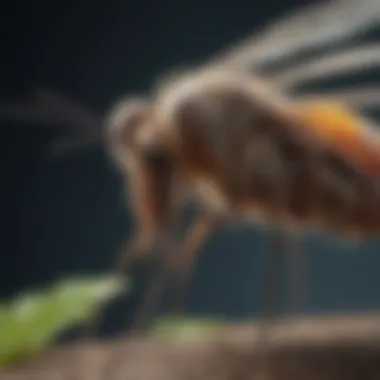
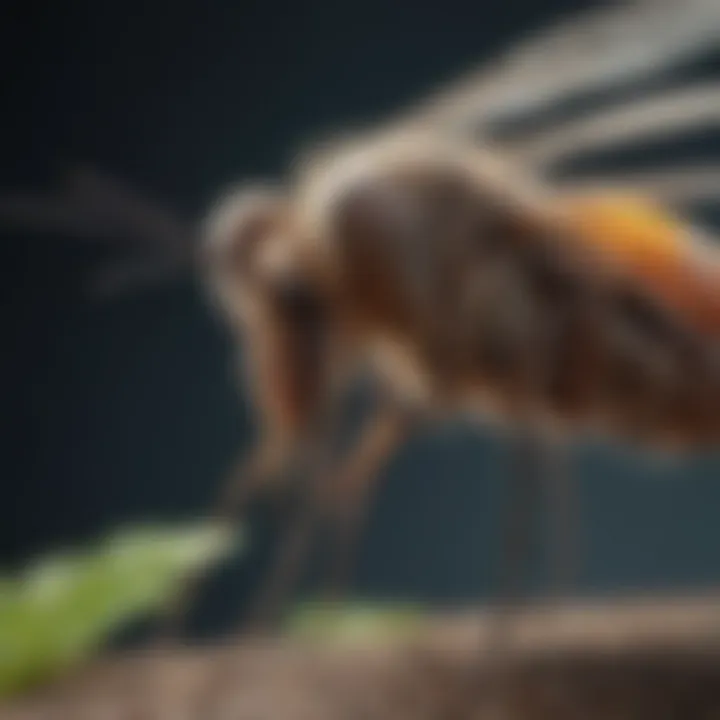
Overview of the Topic
Definition and Importance
Mosquito control in equine management isn’t just a matter of comfort for the horses; it’s a lifeline for their overall health. These flying pests can transmit diseases that are detrimental not just to the horses themselves but also to the broader agricultural environment. West Nile virus, Eastern equine encephalitis, and more are illnesses that can strike fear into the hearts of any horse owner. Ignoring these threats can lead to significant health repercussions and economic losses. Thus, taking effective steps to reduce mosquito populations should be regarded as a top priority in equine management.
Current Trends
In recent years, approaches to mosquito control have evolved. Traditional chemical sprays are still widely used, but there’s an increasing emphasis on integrating more sustainable and environmentally-friendly practices. Many equine facilities are turning to biological controls, such as introducing natural predators like dragonflies or bats, as well as employing community efforts, such as larviciding swampy areas or implementing drainage solutions. These trends show that owners are beginning to appreciate that a multi-faceted approach can help tackle this problem efficiently while also preserving the ecosystem.
Key Techniques and Practices
Step-by-Step Guide
- Understand the Mosquito Lifecycle
Knowledge is power. Familiarize yourself with the different stages — egg, larva, pupa, and adult. Addressing mosquitoes at each phase can drastically reduce their populations. - Eliminate Standing Water
Mosquitoes breed in stagnant water. Regularly inspect your property and remove any containers, buckets, or puddles where water can collect. - Install Mosquito Traps
Strategically placing traps around your farm can help capture adult mosquitoes. Research various traps to find the ones that are most effective in your area. - Use Natural Repellents
Consider using essential oils or plant-based repellent solutions. Ingredients like lemon eucalyptus oil can be beneficial and less harmful than traditional chemicals. - Regular Monitoring
Set up a schedule to assess the effectiveness of your mosquito management strategies. Make adjustments as necessary based on what works best for your environment.
Tools and Equipment Needed
- Mosquito Traps: Look for CO2 traps or UV light traps.
- Larvicides: Such as Bacillus thuringiensis israelensis (Bti) that target pests during their larval stage.
- Natural Repellents: Essential oils formulated specifically for repelling mosquitoes.
- Pesticide Sprayers: If chemical control is deemed necessary, choose a sprayer that similarly aligns with your environmental goals.
Challenges and Solutions
Common Obstacles
- Weather Conditions
Temperature and rainfall can heavily influence mosquito populations. Rains can create more standing water, while dry spells can reduce breeding sites. - Resistance to Chemical Control
Many mosquito populations are becoming resistant to common pesticides, making old methods less effective. - Community Support
Not all neighboring farms may prioritize mosquito control, which can undermine collective efforts.
Innovative Solutions
- Community Education: Engage with local agricultural groups to encourage collaborative mosquito management practices.
- Integrated Pest Management (IPM): Adopt various control methods that combine biological, cultural, mechanical, and chemical tools. This comprehensive strategy can be more effective in the long run.
- Smart Technology: Advanced technologies, like mosquito surveillance systems, can aid in monitoring and predicting mosquito populations, allowing for timely actions.
"Effective mosquito management requires not just individual action, but a community commitment to education and practices that support the health of our equine friends."
Implementing these strategies effectively contributes not only to the well-being of horses but also fosters a healthy environment for all agricultural endeavors. Consider making it a point to share information with peers, fostering a wider network of awareness around optimal mosquito management practices.
Intro to Mosquito Control for Horses
Mosquito control is a crucial consideration for anyone involved in equine management. It is not just about keeping these pesky insects at bay; it fundamentally relates to the well-being and health of the horses. Horses are invaluable assets—not only as companions but also as working animals in agricultural settings. The presence of mosquitoes can lead to various health complications, making effective management strategies vital.
Understanding mosquito control involves recognizing the seriousness of the issues at stake. Horses can face numerous health threats arising from mosquito bites, which can transmit debilitating diseases. Thus, taking proactive measures against these pests is not merely a precaution; it is a necessary step in safeguarding equine health.
The Importance of Mosquito Control in Equine Health
Mosquitoes are not mere nuisances; they are vectors capable of spreading serious diseases. For instance, the West Nile Virus and Eastern Equine Encephalitis can have devastating effects on a horse's health and even lead to death. Implementing mosquito control strategies can significantly reduce the chances of these diseases circulating within equine populations. Owners must understand that neglecting this aspect of management can lead to dire consequences not only for the horses but also for the overall productivity of the farm or ranch. Horses that fall ill may require expensive veterinary care or, in worse case scenarios, might need to be euthanized.
Overview of Mosquito-Borne Diseases Affecting Horses
West Nile Virus
West Nile Virus poses a severe threat to equine health. The virus is primarily maintained in birds and transmitted to horses via mosquito bites. This disease can lead to neurological conditions that can dramatically affect a horse's ability to perform and may have fatal outcomes. One of the notable characteristics of West Nile Virus is its relatively high mortality rate in horses, estimated to be between 30% and 40%. This emphasizes its relevance in this guide—highlighting the need for robust mosquito control measures.
Eastern Equine Encephalitis
Another significant disease linked to mosquito bites is Eastern Equine Encephalitis (EEE). Known for its rapid onset and crippling effects, EEE can cause inflammation in the horse's brain. The key characteristic of this disease is that it also has a high mortality rate, which can reach up to 90% in affected horses. The rapid decline in health associated with EEE underscores its importance as a focal point when discussing mosquito-borne risks in equine management.
Other Relevant Diseases
Aside from West Nile Virus and EEE, horses may also be susceptible to other mosquito-related diseases like West Nile virus and even malaria in rare cases. Each of these diseases presents specific challenges for management and treatment. The unique aspect of these diseases lies in their varying symptoms and treatment protocols, making it crucial for horse owners to stay informed and ready to act.
"Keeping horses free from mosquito-borne diseases is not just a matter of convenience; it's a critical scud that can determine the future health of our equine friends."
In summary, a solid understanding of the mosquito-related health risks is paramount for effective equine management. By proactively addressing these issues, horse owners can create healthier, safer environments for their animals.
Understanding Mosquito Biology
Understanding the biology of mosquitoes is essential for developing effective mosquito control strategies in equine management. By getting a grip on how mosquitoes live and thrive, horse owners can better predict their behavior and take proactive measures to minimize their presence. Key elements such as their lifecycle, breeding habits, and environmental preferences play a crucial role in shaping control methods.
Lifecycle of Mosquitoes
The lifecycle of mosquitoes consists of four distinct stages: egg, larva, pupa, and adult. Each stage presents opportunities and challenges in control efforts, highlighting the need for tailored strategies at every level.
Egg Stage
The egg stage is the beginning, where mosquitoes lay their eggs in or near stagnant water. A key characteristic of this stage is the survival resilience of the eggs, which can remain dormant for extended periods in favorable conditions. This trait makes it a particularly challenging aspect of mosquito control.
An essential feature of the egg stage is the oviposition behavior, where females can choose optimal spots to lay eggs, ensuring their survival and subsequent population increase. The advantages here are evident—understanding where mosquitoes lay their eggs helps in targeting elimination efforts effectively.
Larval Stage
The larval stage is when mosquitoes are actively feeding and growing. This phase mainly occurs in water, where larvae filter feed on organic matter. Larvae are characterized by their water dependency; without water, they cannot survive.
Monitoring and managing this stage are advantageous because targeting larvae can significantly reduce the number of adult mosquitoes. The downside here is that larvae can develop into adults rapidly if conditions are right, leading to a quick rebound in populations if not managed efficiently.
Pupal Stage
When mosquitoes enter the pupal stage, they become less active but are still dependent on aquatic habitats. A defining feature of the pupal stage is its transitional nature; it acts as a bridge between the larval and adult stages.


During this phase, mosquitoes are more vulnerable, making targeted interventions potentially more effective. The exception, however, is that this stage lasts a short period, so timing is key—waiting too long could allow them to emerge as adults.
Adult Stage
The adult stage is the last frontier of the mosquito lifecycle and where they become the familiar pest. Key characteristics of adult mosquitoes include their flight capabilities, which allow them to travel considerable distances in search of hosts.
This stage is critical for disease transmission as adult mosquitoes can spread pathogens, impacting horse health. Control measures during this phase typically involve repellents or insecticides. However, the downside is that these interventions must be done cautiously to avoid harming horses and other non-target species.
Environmental Factors Influencing Mosquito Populations
The environment plays a significant role in influencing mosquito populations. Understanding these factors allows horse owners to create less hospitable settings for these pests.
Water sources and habitats
Water sources serve as essential breeding grounds for mosquitoes. A key characteristic is the availability of standing water; pools, puddles, and even neglected containers can become breeding sites. Eliminating or managing these water sources is vital for reducing mosquito populations.
The unique feature of this environmental factor is its direct influence on mosquito reproduction rates. If not addressed, the advantages of moist habitats can quickly lead to pest proliferation.
Temperature and humidity
Temperature and humidity are crucial in mosquito lifecycle phases. For instance, warm temperatures can accelerate development from egg to adult, while humidity influences survival rates. The beneficial aspect of maintaining optimal conditions for horses's well-being directly distracts from mosquito breeding, creating a less favorable environment for them.
However, extreme conditions can sometimes favor specific mosquito species, complicating control efforts. Ignoring these factors can result in an unforeseen increase in populations.
Seasonal variations
Seasonal variations impact mosquito life cycles significantly, with warmer months typically seeing higher activity. The key characteristic of this factor is its predictability; many mosquito species emerge at specific times of the year, which allows horse owners to prepare in advance.
With careful planning around seasonal changes, owners can implement control measures when they are most needed. The unique feature here is that while seasons bring increased activity, they can also offer reprieve when temperatures drop, allowing for recovery time in management efforts.
Overall, appreciating these biological and environmental factors equips horse owners with the knowledge needed to implement effective mosquito control strategies.
Assessment of Mosquito Risks in Equine Environments
Assessing mosquito risks in environments where horses are kept is a crucial part of effective management. This process not only helps in understanding the potential threats posed by these pests but also facilitates the development of tailored strategies to mitigate their impact on equine health. Identifying vulnerabilities in their surroundings means horse owners can take proactive measures to protect their animals from illness.
Moreover, assessing risk involves both physical and environmental evaluations. One must walk the land, taking note of stagnant water, vegetation, and other conditions that might create a hospitable habitat for mosquitoes. By pinpointing these areas, horse owners not only safeguard the animals but also contribute to broader community health initiatives, as controlling mosquitoes can reduce the transmission of diseases that can affect not only equines but humans as well.
Identifying High-Risk Areas
Identifying high-risk areas is the first step in assessing mosquito risk. This can seem daunting, but the task primarily revolves around observation and understanding of the local ecology. Look for spots with standing water, poorly drained pastures, or even ditches and puddles that can turn into breeding grounds. Landscapes with heavy vegetation close to horse habitats can be additional risk factors.
The strategy often entails walking the entire property, identifying potential water bodies that could harbor mosquito eggs. Pay particular attention to areas where water pools after rain; it only takes a few days for mosquitoes to breed. By recognizing these potential trouble spots early, horse owners can implement preventive measures more efficiently.
Monitoring Mosquito Activity
Monitoring mosquito activity is essential for assessing the effectiveness of control measures. Observing their population trends and behaviors provides insights into how populations fluctuate, allowing for timely interventions.
Use of traps
One effective means of monitoring mosquito populations is through the use of traps. These devices catch adult mosquitoes, providing a tangible way to gauge the population size and species present in a given area. The key characteristic of traps is their capacity to attract mosquitoes via various attractants, such as carbon dioxide or heat. This makes them a popular choice among horse owners.
The unique feature of traps is their versatility. Different models cater to various mosquito species, thus enhancing local monitoring efforts. However, potential drawbacks include maintenance needs and costs associated with the traps. Regular data collection from these traps can significantly inform future management strategies.
Data collection techniques
Data collection techniques are imperative to understanding the mosquito population dynamics over time. Different methods can be employed, such as sampling methodologies or citizen science efforts where volunteers help collect information about mosquito presence and behavior. This approach not only engages the community but also broadens the data pool available for analysis.
The key aspect of incorporating varied techniques lies in their ability to gather comprehensive data. By understanding when and where mosquitoes are active, horse owners can target their control efforts more effectively. A unique challenge, however, is ensuring data accuracy and reliability, which can vary depending on the technique used.
Analyzing mosquito behaviors
Analyzing mosquito behaviors also plays a vital role in mosquito risk assessments. Understanding when mosquitoes are most active can influence management strategies. For example, some species bite at dawn and dusk, while others are more active during the day. Knowing these patterns helps in scheduling preventative measures, such as application of repellents or strategic turnout times for horses.
The ability to analyze these behaviors can directly contribute to reducing mosquito bites on horses, thereby diminishing the risk of disease transmission. However, a potential downside is that this analysis often requires time and resources; these may not always be available to every horse owner given the myriad responsibilities they juggle.
To sum it up, assessing risk in equine environments means understanding the dynamics of mosquito populations and their preferences. Tackling mosquito issues head-on often results in a healthier, more comfortable environment for horses, benefitting both the animals and their owners.
Preventive Measures for Mosquito Control
Preventive measures for mosquito control are the cornerstone of any successful equine management strategy. The impacts of mosquitoes on horse health extend far beyond mere annoyance, as these pests can transmit serious diseases affecting equines. A proactive approach not only safeguards the health of the animals but can also reduce the financial burden associated with veterinary care related to mosquito-borne diseases. This section explores specific strategies that can effectively reduce mosquito populations and, consequently, the risk they pose to horses.
Eliminating Breeding Grounds
Water management strategies
Managing standing water is a critical element in eliminating potential breeding sites for mosquitoes. Mosquitoes favor stagnant water for laying eggs. By routinely inspecting stalls, troughs, and paddocks for any sources of standing water, equine caregivers can mitigate breeding opportunities. It's important to ensure proper drainage and to regularly clean out water containers to keep them from becoming mosquito nurseries. This proactive measure helps in decreasing mosquito populations significantly, providing a beneficial approach to overall mosquito management in equine settings. However, a challenge can arise during heavy rain periods, when flash floods can create unexpected pools of stagnant water if the region lacks effective drainage systems. Therefore, regular assessment of these areas is essential.
Landscaping adjustments
Landscaping plays an often-overlooked role in mosquito control. Adjustments like trimming overgrown bushes, mowing lawns regularly, and removing debris can drastically reduce places where mosquitoes can rest and reproduce. Maintaining an organized and tidy landscape minimizes hiding spots for mosquitoes, which ultimately leads to lower populations. This strategy is popular among horse owners, as it not only enhances the aesthetics of the property but also promotes a healthier environment for their horses. However, a potential drawback of aggressive landscaping may disrupt local wildlife habitats, which could inadvertently affect other aspects of the ecosystem surrounding the equestrian area.
Proper waste disposal
Effective waste disposal is another crucial aspect when it comes to mosquito control. Horse manure can attract considerable amounts of moisture and can become a favored breeding area for these pests. Implementing a scheduled clean-up routine for stalls and turn-out areas is therefore essential. Utilizing composting techniques or proper manure storage solutions can safeguard against mosquito breeding while also benefiting the soil quality for future gardening or pastures. This key characteristic makes proper waste disposal a strategically sound choice for equine management. That said, care must be taken to balance waste management practices with local environmental regulations to avoid any potential pollution issues.
Utilizing Physical Barriers

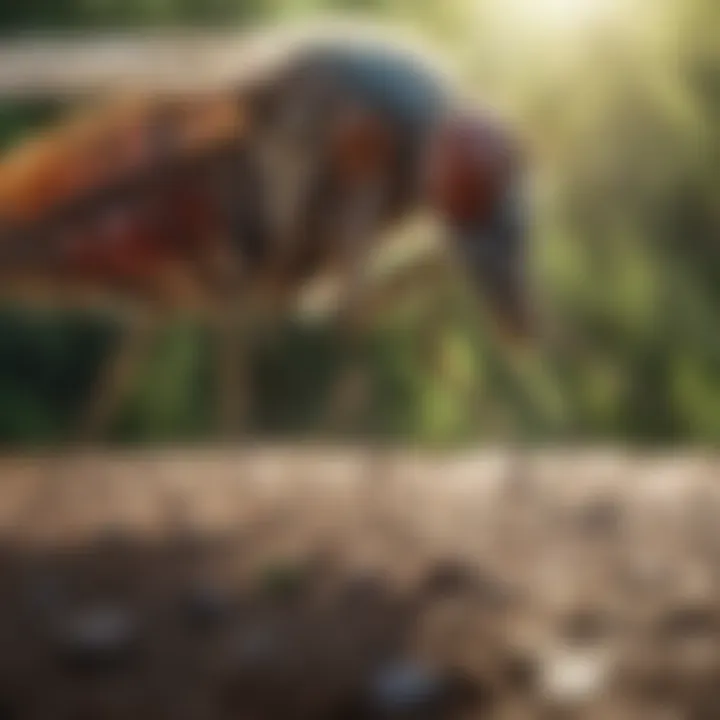
Screening stables
Installing screens in stables is a straightforward yet effective way to keep mosquitoes at bay. Not only does this act as a physical barrier against pests, but it also allows for ventilation, helping manage indoor temperatures during hot months. A well-screened stable creates a comfortable environment for horses and reduces stress levels associated with insect bites. This strategy is favored by many horse owners, particularly in regions where mosquito populations are prevalent. On the downside, screening requires regular maintenance to ensure there are no tears or openings through which mosquitoes might sneak in.
Using barriers and nets
Utilizing mosquito nets or fine mesh barriers around outdoor areas where horses gather provides a hands-on approach to minimize exposure. These nets can significantly reduce the number of mosquitoes that approach the horse, thus providing a sense of security for both the animal and its handler. This kind of protective setup is beneficial, especially during peak mosquito activity times, such as dawn and dusk. A downside can be the costs associated with setting up and maintaining these nets, particularly if they need regular replacing due to wear and tear from weather elements.
Inventive housing designs
The architectural design of stables and barns can be upgraded to contribute to mosquito prevention. Features like elevated flooring, which prevents water accumulation under structures, can provide a natural deterrent. Additionally, installing fans or misters in areas where horses congregate can create unfavorable conditions for mosquitoes. Such inventive housing designs are wise investments in the broader strategy of mosquito management; they not only combat insect issues but also improve the general well-being of the horses. It is essential to factor maintenance costs and the structural integrity of these designs to ensure long-lasting efficacy.
Overall, implementing these preventive measures provides a comprehensive foundation for managing mosquito populations in equine environments. From reducing breeding grounds to creating effective physical barriers, these strategies safeguard horse health while enhancing the overall quality of life for these animals.
Biological and Ecological Control Methods
When it comes to mosquito control, biological and ecological methods play a vital role in maintaining a healthy equine environment. These strategies not only minimize mosquito populations but also foster a balanced ecosystem. The beauty of biological control lies in its inherent sustainability; leveraging natural enemies reduces reliance on chemical interventions. By fostering populations of mosquitoes' predators, we can effectively manage these pests while encouraging a healthier environment for horses and other wildlife.
Natural Predators of Mosquitoes
Birds
Birds are quite helpful in reducing mosquito numbers. Species like swallows and purple martins feast on mosquitoes, making them an effective natural control method. One of the key characteristics of birds is their adaptability; they can thrive in various habitats around equine facilities, from open fields to barnyards. Additionally, providing nesting sites can encourage birds to dwell nearby, increasing their beneficial impact.
However, not all birds prefer mosquitoes as a primary food source. Some may opt for easier prey, which could limit their effectiveness as mosquito busters. Still, encouraging bird populations can positively contribute to a decrease in mosquito presence.
Bats
Bats are another essential ally in the fight against mosquitoes. A single bat can consume thousands of insects in a night, showcasing their efficiency as predators. Their nocturnal habits mean they go after mosquitoes when these pests are most active. Bats also contribute to biodiversity, and their presence in the equine management ecosystem signals a healthy environment.
Installing bat houses around horse barns can attract these mammals, encouraging them to take up residence. However, it’s important to ensure that bat houses are correctly designed and placed. Without appropriate care, bats may choose not to roost, thus limiting their potential pest control benefits.
Other insect predators
Insect predators such as dragonflies and certain species of beetles also play a role in controlling mosquito populations. Their predation helps manage mosquito larvae and adults alike. The distinct advantage here is that these predators are generally low maintenance and require no special habitat modifications. They are beneficial due to their natural hunting instincts, which aid in keeping mosquito populations in check.
Though these predators contribute to mosquito control, their presence can be influenced by environmental factors such as water sources or landscape management. For instance, the absence of still water may reduce larval habitat, creating a less conducive environment for mosquitoes to thrive. Incorporating suitable habitats for these insect predators into management practices can lead to an effective, natural control strategy.
Incorporating Beneficial Organisms
Larvivorous fish
Larvivorous fish, like guppies and killifish, have gained recognition for their role in controlling mosquito larvae. These fish feed on developing larvae in stagnant water bodies, making them invaluable in reducing mosquito populations before they can mature into biting adults. Their ability to thrive in various aquatic environments makes them a flexible solution.
However, maintaining a healthy fish population is crucial to ensure their effectiveness. Overcrowding or inadequate food sources can affect their efficiency, making careful management practices important.
Nematodes
Nematodes, or roundworms, have gained traction in pest management as a biological control method. They infect and kill mosquito larvae, helping reduce populations naturally. The key characteristic of nematodes is their ability to reproduce quickly in moist environments, allowing them to adapt to seasonal changes and fluctuating mosquito numbers. This adaptability makes them a beneficial choice in various ecological settings.
On the flip side, they require specific environmental conditions to thrive. Extreme temperatures or lack of moisture can hinder their effectiveness, so understanding habitat needs is essential for leveraging their pest control capabilities.
Use of bacteria and fungi
The use of bacteria and fungi in mosquito control offers an innovative approach. Bacteria such as Bacillus thuringiensis israelensis (Bti) can specifically target mosquito larvae in water, leaving other organisms unharmed. Fungi can act as biological agents that infect and kill larvae and adults. Their specificity and low environmental impact make them a popular choice in integrated pest management.
Despite their advantages, there are challenges to consider, including the timing of application and effectiveness against varied mosquito species. Regular monitoring and evaluation of these biological controls are crucial to ensuring their ongoing effectiveness in mosquito management.
Chemical Control Options
Chemical control presents a cornerstone in the fight against mosquito populations in equine environments. It’s not just about spraying a little insecticide here and there; it's a systematic approach that, when implemented correctly, can provides substantial breakthroughs in minimizing mosquito-related risks. Understanding the various aspects of chemical control is essential, particularly as it intersects with the health needs of horses.
Insecticides and Repellents
Types of insecticides
When talking about types of insecticides, one must consider the various mechanisms through which these chemicals act on mosquito species. Common classes include pyrethroids, neonicotinoids, and organophosphates. Each of these categories presents unique benefits.
- Pyrethroids are popular for their fast-acting nature, often showing quick results against adult mosquitoes. They mimic natural insect neurotoxins found in chrysanthemum flowers, making them a rather effective and less toxic option.*
- Neonicotinoids, on the other hand, focus on affecting the nervous system of insects and are known for their prolonged efficacy.
One of the notable aspects of these insecticides is their persistent residual activity, meaning they continue to work long after application. However, it’s crucial to remain mindful of the potential environmental impacts and ensure these solutions do not disrupt beneficial insect populations or livestock.
Application methods
The application methods for these insecticides can vary widely, depending on the specific product and the targeted environment. Techniques often include aerial spraying, fogging, or even targeted spot treatments. Each method holds its unique merits.
- Aerial spraying covers a large area quickly but often requires a skilled pilot, and it might lead to overspray if not managed properly.
- Fogging, often used in warmer months, distributes fine insecticide droplets capable of reaching mosquitoes hiding in shrubs or tall grass.
The beauty of these methods lies in their adaptability. One can easily mix and match techniques based on mosquito activity levels. Nevertheless, proper training is necessary to avoid any potential health risks to horses during application.
Safety measures for horses
Implementing safety measures for horses when utilizing chemical controls is not merely optional; it’s vital. This includes a range of actions to ensure that chemical exposure does not result in adverse effects.
- Adhering to recommended waiting periods after application before allowing horses back into treated areas is a must.
- Using protective gear while spraying also stands as a best practice. Properly fitted masks and gloves can help minimize the risk of direct exposure to both the horse and the person applying the treatment.
The unique feature of these safety measures is their dual focus: ensuring efficacy while protecting the health of the horses. While the use of chemicals is valuable, being cautious is what separates effective management from hazardous practices.
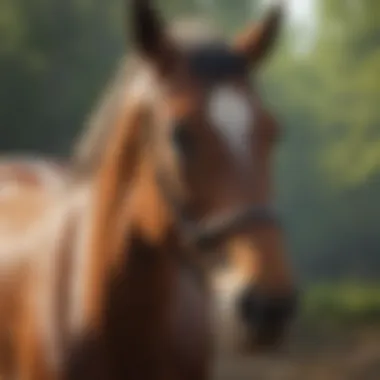
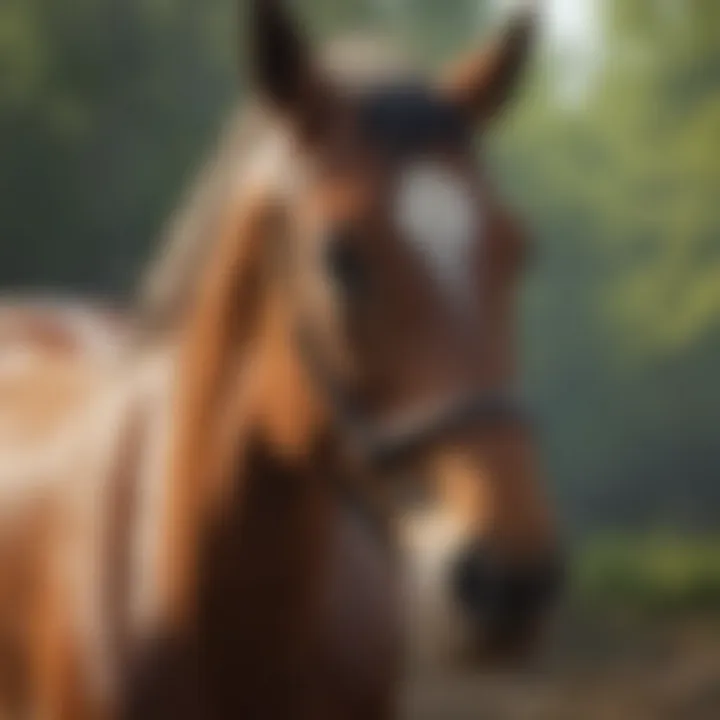
Integrating Chemical Control with Other Methods
Combination strategies
A combination strategy is often regarded as an optimal approach to mosquito control, blending chemical methods with biological and environmental tactics. Such integrative strategies not only enhance effectiveness but also contribute to sustainability in equine management.
For instance, pairing insecticide application with physical barriers—like screens around stalls—can significantly reduce mosquito access while minimizing reliance on chemicals. This dual-prong technique maximizes control and reduces environmental harm, making it a smart option overall.
Evaluation of effectiveness
Evaluating the effectiveness of the chemical methods employed is necessary to refine ongoing mosquito control efforts. Regular assessments allow equine managers to understand what works and what doesn’t, enabling them to adapt their strategies accordingly.
- Would implementing a new application method yield better results? Or should the types of insecticides be revisited?
- Important metrics can include mosquito population counts post-application or even assessing any variations in disease occurrence among the herd.
Impact on the environment
Finally, one cannot dismiss the impact on the environment aspect when discussing chemical control. While chemicals can effectively diminish mosquito populations, their potential repercussions must be considered.
- This includes effects on non-target species, potential chemical runoff into nearby water sources, and even broader ecological impacts. Striking a balance becomes imperative.
The unique challenge lies in finding environmentally-friendly options that do not sacrifice effectiveness. As society pushes for greener alternatives, equine managers must continuously adapt to evolving methodologies that prioritize both horse health and the surrounding ecosystem.
It is essential to maintain a holistic view of mosquito control, considering both immediate needs and long-term environmental sustainability.
Best Practices for Equine Mosquito Control
Mosquitoes aren't just an itchy nuisance; they pose a significant threat to the health of horses. Implementing effective control strategies can make all the difference between having happy, healthy animals and dealing with diseases that can cause severe harm. Understanding and applying best practices for mosquito control is essential for equine management. This is particularly relevant in areas with high mosquito populations where horses are constantly exposed to the risk of bites and potential diseases.
Developing a Comprehensive Mosquito Management Plan
The backbone of effective mosquito control lies in a well-thought-out management plan. This blueprint serves as a guide, laying out specific strategies and actions tailored to the unique needs of the premises. Key elements may include identifying high-risk periods, routinely assessing mosquito populations, and implementing a range of preventative measures. The benefits of such a plan are manifold: it enhances the effectiveness of control efforts, ensures a systematic approach to addressing the challenge, and ultimately protects the equine population.
Key Components of a Management Plan:
- Assessment of breeding sites: Discover where mosquitoes might be reproducing.
- Monitoring techniques: Regular checks using traps and other methods.
- Flexible strategies: Adapt plans to changing environments and mosquito behaviors.
Educating Horse Owners and Staff
Knowledge is a powerful tool in the war against mosquitoes. Educating those involved in the management and care of horses can have a profound impact on the effectiveness of control strategies. This goes beyond mere awareness; it’s about fostering a culture of vigilance and preparedness.
Training modules
Training modules that focus on mosquito biology, disease awareness, and control measures can equip staff with essential information. These modules provide structured learning that can be easily integrated into regular training schedules. A standout feature of these training resources is the interactivity they offer; they can engage learners through actionable insights tailored to their specific environments. Such an approach is popular because it not only improves understanding but also ensures that the crew is on the same page, working towards common goals.
- Advantages: It helps deepens knowledge and understanding.
- Disadvantages: Time investment can be a hindrance for busy staff schedules.
Material accessibility
Having easy access to relevant materials such as pamphlets, schedules, and online resources is crucial for effective education. Material accessibility shapes how readily individuals can obtain and utilize critical information. A major characteristic of accessible materials is their ability to cater to various learning styles—whether visual, auditory, or kinesthetic. Furthermore, making these resources available both in print and online can ensure that teams have the tools they need at their fingertips.
- Advantages: Increases the likelihood of timely updates and adherence to protocols.
- Disadvantages: Can become outdated quickly without regular reviews and updates.
Regular updates on practices
With the landscape of mosquito control constantly evolving, keeping up-to-date with the latest practices is vital. Implementing a regular update format ensures the continuous education of horse owners and staff regarding effective strategies. This might involve periodic workshops or the distribution of bulletins that outline changes to recommended practices based on new research or findings. The main advantage of this approach lies in the proactive stance it fosters within the community, encouraging everyone to be well-informed and ready to adapt.
- Advantages: Ensures that everyone stays current on the best methods.
- Disadvantages: Requires commitment and resources to maintain effectively.
Keeping horses free from the threat of mosquitoes is not just a one-time effort—it's a continuous commitment that benefits from structured education and adaptability.
Adopting these best practices makes a tangible impact in managing mosquitoes and thus protecting the overall health of equine environments.
Ending and Future Directions in Mosquito Control for Horses
Mosquito control isn’t just an afterthought for equine management; it is a critical piece of the puzzle that influences horse health and overall ranch productivity. As we wind down this exploration of effective strategies for managing mosquitoes, it’s important to take stock of what we’ve learned and anticipate what lies ahead. By optimizing current practices, we pave the way for a more sustainable and health-focused environment for our horses.
Evaluating Success and Adapting Strategies
First, it's necessary to evaluate how well the current mosquito control measures are performing. This involves collecting data on mosquito populations, disease incidence among horses, and the effectiveness of different control measures employed. Regular assessments allow horse managers to see what works and what doesn’t, enabling them to adjust their approaches accordingly.
For instance, monitoring the success of physical barriers or chemical applications can help determine if changes are needed. If a certain area remains a haven for mosquitoes despite efforts, it might be time to rethink land management practices or even engage in community efforts for holistic pest control. Adjusting practices in real time ensures that strategies remain effective and responsive.
Research and Innovations on the Horizon
Emerging Technologies
Innovation is never-ending, especially in the realm of pest control. One significant area of research focuses on genetic modifications of mosquito species. Scientists are finding ways to engineer mosquitoes to reduce their populations or even make them less capable of transmitting diseases. The prospect of using genetically modified mosquitoes presents a unique opportunity to greatly diminish mosquito populations without the heavy reliance on chemicals.
The key characteristic that makes this emerging technology appealing is its potential for long-term impact. Unlike traditional insecticides which may require repeated applications, genetically modified organisms (GMOs) could offer a more lasting solution. However, this technology is not without its controversies and potential ecological risks, making it essential for careful evaluation in the context of equine health and management.
Policy Implications
Clear regulations surrounding mosquito control and research can significantly affect outcomes in equine management. There needs to be collaboration among horse owners, veterinarians, and policy makers to create guidelines that promote effective mosquito control while considering animal welfare and environmental health. Implementing such policies can drive uniformity in approaches taken across different farms and stables.
One notable aspect of policy implications is the potential for financial support for research in innovative mosquito control methods. Policy frameworks could prioritize funding for studies and technologies that show promise, enabling sustainable practices that protect horses effectively. Unfortunately, navigating the bureaucratic waters can sometimes slow progress, so an active dialogue among stakeholders is crucial.
Community Involvement
An often-overlooked element in mosquito control is community involvement. Horse owners and local agriculturalists can work together, sharing knowledge and strategies for managing mosquito populations. By fostering a community-based approach, everyone can benefit from collective experiences and solutions.
The strength of community involvement lies in shared responsibility. Local workshops or informational sessions could encourage the implementation of better practices, like identifying stagnant water or discussing innovative barrier setups. Advantages of such cooperation include a more informed public, reduced mosquito populations, and, ultimately, healthier horses. However, potential challenges might include varying levels of engagement or understanding, thus necessitating clear communication and enthusiastic leadership.
"Collaboration and innovation are the key components in achieving effective mosquito control for the future of our horses."



